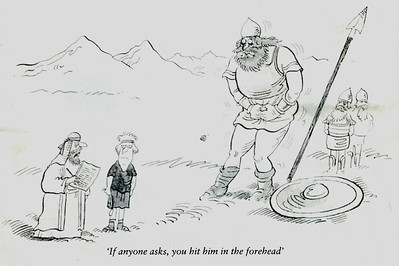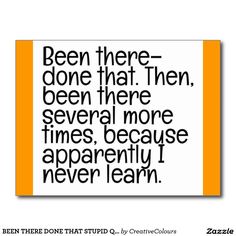|
|
|
Archive for the 'Culture' Category
Wednesday, February 19th, 2020

Maybe it takes tech to beat tech.
Or founders who plan to walk their talk even after them become successful, unlike the “don’t be evil” guys.
More entrepreneurs are pursuing social or environmental goals, said Greg Brown, a professor of finance at the Kenan Institute of Private Enterprise at the University of North Carolina.
Companies like Toms, Warby Parker and Uncommon Goods have pushed this concept into the mainstream by creating successful business models built around helping others. This trend has led to the rise of B Corporations, a certification for companies that meet high standards of social responsibility. The program started in 2007, and now more than 2,500 companies have been certified in more than 50 countries.
Including Afghanistan.
Not all these startups make it and many are choosing to do it sans investors who often start pushing for growth and revenue, social mission be dammed.
And they are slowly succeeding.
Companies like Moka are a reflection of how consumers think as well, Professor Brown said. As people’s wealth increases, they think more about quality and less about quantity. They also consider the social context of what they’re buying.
Others are developing tech to defend against tech.
The “bracelet of silence” is not the first device invented by researchers to stuff up digital assistants’ ears. In 2018, two designers created Project Alias, an appendage that can be placed over a smart speaker to deafen it. But Ms. Zheng argues that a jammer should be portable to protect people as they move through different environments, given that you don’t always know where a microphone is lurking.
These may not be the solution, assuming there is one, but this definitely isn’t.
Rather than building individual defenses, Mr. Hartzog believes, we need policymakers to pass laws that more effectively guard our privacy and give us control over our data.
You have on to consider tech’s actions in Europe to know that laws don’t stop tech.
There’s another potential positive brewing in tech — actually a disruption of sorts.
That’s the long-time coming move away from current ageist thinking.
As brilliant as young coders are, though, the industry can’t survive on technical chops alone. Last year, Harvard Business Review shared that the average age of a successful startup founder isn’t 25 or 30—it’s 45 years old.
Call it a miracle, but investors, the majority over 40, are starting to value the experience that comes with age.
Hopefully, in the long-run, the potential for success will outweigh the hang-up on age.
As a whole, entrepreneurial communities also need to do more to bring diverse groups to meet-ups, panels and speaking engagements. The importance of having more voices at the table can’t be diminished.
Let’s just hope it isn’t too long.
Image credit: Ron Mader
Posted in Culture, Entrepreneurs, Motivation, Retention | No Comments »
Tuesday, February 18th, 2020

If, like me, you wonder if there is anything to stop tech from its all-consuming forward march, there may be.
Tech needs two things to keep going
So what happens when those segments start rebelling?
There’s a tech backlash best seen in the newest crop of workers.
“Working at Google or Facebook seemed like the coolest thing ever my freshman year, because you’d get paid a ton of money but it was socially responsible,” said Chand Rajendra-Nicolucci, 21, a senior at the University of Michigan. “It was like a utopian workplace.”
Now, he said, “there’s more hesitation about the moral qualities of these jobs. It’s like how people look at Wall Street.”
“It felt like in my freshman year Google, Palantir and Facebook were these shiny places everyone wanted to be. It was like, ‘Wow, you work at Facebook. You must be really smart,’” said Ms. Dogru, 23. “Now if a classmate tells me they’re joining Palantir or Facebook, there’s an awkward gap where they feel like they have to justify themselves.”
Audrey Steinkamp, a 19-year-old sophomore at Yale, which sends about 10 percent of each graduating class into tech, said that taking a job in Silicon Valley is seen as “selling out,” no different from the economics majors going into consulting who are “lovingly and not-so-lovingly called ‘snakes.’”
“The work you do at a place like Facebook could be harmful at a much larger scale than an investment bank,” Ms. Dogru said. “It’s in the pockets of millions of people, and it’s a source of news for millions of people. It’s working at a scary scale.”
Oops, seems that the moral considerations of where to work are of much more importance for both college and grad students.
Agriculture is supposed to be a market “ripe for disruption,” including tractors that do everything except scratch your back.
You’d think farmers would be cheering.
Instead they are searching out tractors made in the 1970s and 80s that are more profitable to use.
Tractors manufactured in the late 1970s and 1980s are some of the hottest items in farm auctions across the Midwest these days — and it’s not because they’re antiques.
Cost-conscious farmers are looking for bargains, and tractors from that era are well-built and totally functional, and aren’t as complicated or expensive to repair as more recent models that run on sophisticated software.
And it’s the “sophisticated software” they don’t want.
But tractors from the 1970s and 1980s aren’t so dramatically different from tractors produced in the 2000s, other than the irksome software, and at a time when farmers are struggling financially, older tractors can make a lot of business sense.
Both are good news.
Constricting the worker pipeline at one end and a user rebellion at the other are two of the few things that can act as Daniel to tech’s Goliath.
Image credit: Roger W
Posted in Culture, Ethics, Hiring | No Comments »
Wednesday, February 12th, 2020

While AI can do some things on its own, it’s a blunt force, ignorant of nuance, but embracing all the bias, prejudices, bigotry and downright stupidity of past generations thanks to its training.
Using AI to make judgement calls that are implemented sans human involvement is like using a five pound sledgehammer on a thumbtack.
Yesterday looked at what AI can miss in hiring situations, but candidates at least have more choice than others do.
AI is being used extensively around the world by government and law enforcement where its bias is especially hard on people of color.
The algorithm is one of many making decisions about people’s lives in the United States and Europe. Local authorities use so-called predictive algorithms to set police patrols, prison sentences and probation rules. In the Netherlands, an algorithm flagged welfare fraud risks. A British city rates which teenagers are most likely to become criminals.
Human judgement may be flawed and it does has the same prejudices, but it’s not inflexible, whereas AI is.
As the practice spreads into new places and new parts of government, United Nations investigators, civil rights lawyers, labor unions and community organizers have been pushing back.
Now schools are jumping on the bandwagon claiming that facial recognition will make schools safer, but not everyone agrees.
“Subjecting 5-year-olds to this technology will not make anyone safer, and we can’t allow invasive surveillance to become the norm in our public spaces,” said Stefanie Coyle, deputy director of the Education Policy Center for the New York Civil Liberties Union. (…)
Critics of the technology, including Mr. Shultz and the New York Civil Liberties Union, point to the growing evidence of racial bias in facial recognition systems. In December, the federal government released a study, one of the largest of its kind, that found that most commercial facial recognition systems exhibited bias, falsely identifying African-American and Asian faces 10 to 100 times more than Caucasian faces. Another federal study found a higher rate of mistaken matches among children.
So what do the kids think?
Students 13 and older are invited to comment. All comments are moderated by the Learning Network staff…
Read the Q&A to find out.
Image credit: Mike MacKenzie
Posted in Culture, Leadership, Politics | No Comments »
Tuesday, February 11th, 2020

Yesterday included a post about how tech has sold itself as the silver bullet solution to hiring people.
Algorithms actually do a lousy job of screening resumes and companies that rely on them miss a lot of great hires.
Why?
Because the only thing an algorithm can do is match key words and experience descriptions. Based on 13 years of tech recruiter experience I can tell you that rarely does anyone change jobs in order to do the same thing somewhere else, unless they hate their manager or the culture.
Not things that an algorithm is going to pick up on. Nor will the initial phone call usually made not by the hiring manager, but by someone who know little about the job other than to match the candidates responses to a list of “preferred” answers.
No discretionary knowledge based on the manager’s experience or the candidate’s potential.
We all know that management loves to save money and many of them feel that AI will allow them to reduce the most expensive item of their fixed costs, people — including managers.
Imagine an app giving you a quarterly evaluation—without a manager or HR rep in sight—and you have an idea of where this is potentially going.
What management forgets is that a company isn’t an entity at all. It’s a group of people, with shared values, all moving in the same direction, united in a shared vision and their efforts to reach a common goal.
It exists only as long as people are willing to join and are happy enough to stay — excessive turnover does not foster success.
So what do workers think about the use of AI/algorithms?
However, workers don’t necessarily like the idea of code taking over management functions—or hiring, for that matter. Pew research shows 57 percent of respondents think using algorithms for résumé screening is “unacceptable,” and 58 percent believe that bots taught by humans will always contain some bias. Nearly half (48 percent) of workers between the ages of 18 and 29 have some distrust of A.I. in hiring, showing that this negative perception isn’t going away anytime soon.
They are right to be distrustful, since AI is trained on historical datasets its “intelligence” includes all the bias, prejudices, bigotry and downright stupidity of past generations.
This is bad news for companies looking to “increase efficiency,” but great news for companies that recognize they aren’t hiring “resources” or “talent,” but people, with their infinite potential and inherent messiness.
Image credit: Mike MacKenzie
Posted in Communication, Culture, Hiring, Motivation, Retention | No Comments »
Monday, February 10th, 2020

Poking through 11+ years of posts I find information that’s as useful now as when it was written.
Golden Oldies is a collection of the most relevant and timeless posts during that time.
Way back in 2006 when I wrote “MAP—Your Silver Bullet” the world was a different place. Tech hadn’t yet sold it’s story that it would save the world and human bosses were still the key to performance and productivity.
Read other Golden Oldies here.
MAP—your silver bullet
I’ve got a secret to share. Most managers spend time, energy and money (their company’s and their own) in an effort to grow from manager to leader. They study examples and best practices, read books, attend seminars and classes, take advanced degrees, check out software, turn to the spiritual (if so inclined)—you name it and it’s been tried.
The dream is to find a silver bullet; the reality is various levels of incremental improvement; the payoff is enormous—both tangibly and intangibly.
Now for the secret. You already possess the closest thing to a silver bullet that exists and it’s right in your mind.
That’s right, it’s your MAP and, like a snowflake, it’s totally unique—yours, and yours alone. And the magic that turns the bullet from lead to silver is your ability to consciously choose to change your MAP through your own awareness.
How cool is that? The very thing that frees you to soar and it’s not only yours, but also within your control. Who can ask for anything more?
Never forget! You are the silver bullet!
Fast forward nine years and tech had sold business on the idea that it could do anything and fix everything. When I saw the article by Kentaro Toyama I thought it was time to revisit the subject.
Technology Alone Can’t Save the World
According to Kentaro Toyama, the W.K. Kellogg Associate Professor of Community Information at the University of Michigan School of Information and self-described “recovering technoholic,” technology isn’t the panacea it’s cracked up to be.
“Technology works best in organizations that are run well to begin with. (…) The technology industry itself has perpetuated the idea that technology will solve the world’s problems. (…) Everyone wants to believe the work they do is good for society. But a lot of people in the industry have drunk a little too much of their own marketing Kool-Aid.”
What is often ignored is that people are a necessary ingredient for the Kool-Aid to actually work.
The tech eco-system forgets a lesson driven home by Bill Gates in the 1995 book The Road Ahead.
“The first rule of any technology used in a business is that automation applied to an efficient operation will magnify the efficiency. The second is that automation applied to an inefficient operation will magnify the inefficiency.”
Aetna Insurance found this out when they first equipped their claims processors with their own terminals connected to the mainframe (before the advent of personal computers).
The effort was considered ground-breaking and was touted as a way to streamline the claims process.
It failed miserably, because the process itself wasn’t redesigned.
In short, claims had multiple steps with approval required at each. Because the process stayed the same, i.e., claims stalled in electronic form when someone in the approval process was on jury duty or out sick just as they did in the paper version.
Once people redesigned the process the desired efficiencies were reaped well beyond expectations.
Technology is a tool, not a silver bullet; the only real silver bullets are found within the human mind.
Ultimately the right thing is for us to find the optimal use of technology — not to eliminate it, but also not to assume that it can replace human skills.
Flickr image credit: Jason Rogers
Posted in Culture, Golden Oldies, Personal Growth | No Comments »
Wednesday, January 29th, 2020

If you interview or work for a unicorn or unicorn wannabe that excels at raising money you would be wise to take a step back.
Forget charisma and founder vision and consider what is really going on profit-wise and sustainability-wise.
Fast growth is good mainly for VCs, not employees.
If you can discipline yourself not to be dazzled by shiny words and concepts you can learn to sort the wheat from the chaff.
Do that, and you won’t need to buy this sign or tattoo the words on your frontal lobe. 
Image credits: Sarah Rebecca on Instagram and Zazzle
Posted in Culture, Hiring, Personal Growth | No Comments »
Tuesday, January 28th, 2020

Decades ago, when I was a recruiter in Silicon Valley, I preferred working directly with managers, avoiding HR, so I worked primarily with startups and smaller companies as opposed to large corporations — unicorns didn’t exist back then.
Aside from disliking HR’s bureaucratic read tape, I found I could provide better matches by understanding the culture of the hiring manager, whether founder or not.
Yes, there is an overarching company culture, but the manager-specific cultures that exist in every company rarely duplicate it and may not even bare any similarity.
Culture is the direct result of values.
Culture is only ageist, misogynist, bigoted when that manager’s values are ageist, misogynist, bigoted.
To thrive in a culture, you don’t need to duplicate your boss’ values, but they must, at the least, be synergistic.
Accepting an offer from a boss whose values are incompatible, let alone diametrically opposed, to yours can mean setting yourself up for disappointment or worse.
Image credit: pmillerd
Posted in Culture, Hiring, Personal Growth | No Comments »
Tuesday, January 14th, 2020

“Kindness is cool” according to Amanda Giese, Founder/President of Panda Paws Rescue, in the opening credits of her show on Animal Planet.
Kindness is a lot more than cool; in fact, kindness can save lives according to new research.
And that applies to work, as well as the world at large.
Old research
A 1978 study looking at the link between high cholesterol and heart health in rabbits determined that kindness made the difference between a healthy heart and a heart attack.
New research
Just to give you an example — because I know that there are probably a lot of CEOs or managers listening to this — but studies have shown that the strongest predictor of a man’s death from heart disease isn’t cholesterol or blood pressure. It’s his job. Or her job. Everyone knows it’s important to have a good doctor, but it’s also important to have a good manager and to give people the skills that they need to be good managers. –Kelli Harding, professor of psychiatry at Columbia University Medical Center, and author of The Rabbit Effect: Live Longer, Happier, and Healthier with the Groundbreaking Science of Kindness.
Kindness starts with empathy, the capacity to understand or feel what another person is experiencing from within their frame of reference…
The key here is “their frame of reference.”
This is why it’s so difficult for a man to truly understand what women go through or for a Caucasian to walk in the shoes of a person of color.
So while kindness may start with empathy, it’s also what takes over when empathy can go no further.
Kindness is the most essential trait to teach kids if you want to assure their success.
It will serve them well their whole life.
It’s a critical trait for team members.
It’s the hallmark of the best bosses.
It’s not something AI will ever be able to mimic.
Mark Twain said it best.
Kindness is a language which blind people see and deaf people hear.
And everybody benefits from.
Want to learn more about the benefits of kindness? Here’s a reading list of recent books.
Image credit: Ron Mader
Posted in Culture, Personal Growth, Retention | No Comments »
Monday, January 13th, 2020

Poking through 14+ years of posts I find information that’s as useful now as when it was written.
Golden Oldies is a collection of the most relevant and timeless posts during that time.
This post dates to 2006, yet it is as applicable today as it was then. More, in fact, as a result of social media. In many ways social media is emotional contagion on steroids — nothing short of a pandemic.
Read other Golden Oldies here.
We’ve all heard, in one variation or another, of the ongoing battle between positive and negative that is fought within each person. One of the best versions is credited to the Cherokee and uses wolves to represent the opposing sides. I like this one because it recognizes that there may seem to be no difference in appearance (in other words, you can’t always tell a book by the cover) and goes on to say that the wolf that wins the battle will be the wolf that is fed.
Skipping the biggies (kill, lie, cheat, steal), just what impact does the battle have within the workplace? And what, as a manager, is your responsibility?
A lot, as it turns out—and it even has a name. It’s called “emotional contagion” and much of the recent research that’s been done has focused on emotionally negative or positive bosses. The results won’t surprise those of us who’ve been exposed to “glass half empty” people—the experts have proved that negative emotions, especially in leaders, can bring a group down faster than running air conditioning during flu season.
What can you do? Start by staying aware of your own mood. It’s hard to be upbeat when you walk out of a meeting with an enraged client, or a design review for a project about to go over budget, but if you don’t, you’ll bring down the rest of your team and that’ll blow off the entire day (or week or even longer).
Overcome your mood using a simple approach that I first learned from a book by Napoleon Hill more years ago than matters. He said, “Think, act, walk and talk like the person you want to become and you’ll become that person.” He also said, “Act enthusiastic and you’ll become enthusiastic” Put them together and you have an unbeatable, simple, solution for keeping your own morale and, as a result, the morale of your team, positive and productive.
And what about your people? You need to deal with any kind of negativity, including a “blue” mood, immediately. Talk to the person privately; you can’t force someone to discuss a problem, but you can offer your help. You also need to make it clear that whatever is going on you can’t allow it to bring down the team—that while at work he needs to present a positive front. If it’s a personal life problem, especially a big one (illness, loss of life, etc.) offer your support and find out how much of the situation you’re allowed to share with the team. Remember, with personal information, sharing is the employee’s call, not yours.
Sometimes, when really bad stuff happens, it’s hard to act, let alone, be positive, but it’s easier on the team if they understand, even generally, the situation and can be supportive. Also, remember that you aren’t, and shouldn’t be, either shrink or confidante, but you can help them find and connect with resources that offer support and solutions.
Sure, these approaches may seem simplistic, but oft times simple is best. After all, you’re not trying to solve the cause, but to mitigate the effect.
Image credit: thomas stein
Posted in Culture, Golden Oldies | No Comments »
Wednesday, January 8th, 2020

It used to be that work was part of life.
As tech connectivity increased, it became more life is part of work.
Now, instead of a work/life discussion, it’s a work/work conversation.
A year ago I wrote about Millennial optimization and burnout.
This year engineers are talking about how founders take advantage of it and that working for a big company is a viable alternative.
It’s a convenient narrative for the founders and CEOs who count on employees to put in extra hours—often without extra compensation—in order to keep their companies afloat. (…) Basecamp founder and CEO Jason Fried noted on Twitter, “If your company requires you to work nights and weekends, your company is broken. This is a managerial problem, not your problem.”
Working extra long hours was considered the way to get ahead, but it was also the road to burnout.
So, what’s changed in a year?
The advice to get ahead.
Instead of working long hours, nights and weekends for others the recommendation is to use all those unpaid hours working for yourself.
The answer may vary depending on the specifics of your job. But in general, you’re far more likely to get ahead by channeling your enthusiasm and ambition toward your own independent projects—not the company’s. (…) That is, after all, how many founders and CEOs achieved their own success. (…) Other ambitious young people may find that the best way to advance their careers is to dedicate their free time not to the jobs they have, but to the jobs they want.
In other words, continue with the 80-100 hour weeks, just shift part of those hours to your own projects.
Great advice.
Doing so would mean there’s a second party responsible (blamable) for your depression/anxiety/burnout/atrophied social skills/blown relationships/etc.
The truth is that whether those 80-100 hours is for yourself, someone else, or split, they will ruin your health and, eventually, your life.
Image credit: andrew leddy
Posted in Culture, Personal Growth | No Comments »
|
 Subscribe to
Subscribe to
MAPping Company Success
About Miki 
Clarify your exec summary, website, etc.
Have a quick question or just want to chat? Feel free to write or call me at 360.335.8054
The 12 Ingredients of a Fillable Req
CheatSheet for InterviewERS
CheatSheet for InterviewEEs™
Give your mind a rest. Here are 4 quick ways to get rid of kinks, break a logjam or juice your creativity!
Creative mousing
Bubblewrap!
Animal innovation
Brain teaser
The latest disaster is here at home; donate to the East Coast recovery efforts now!
Text REDCROSS to 90999 to make a $10 donation or call 00.733.2767. $10 really really does make a difference and you'll never miss it.
And always donate what you can whenever you can
The following accept cash and in-kind donations: Doctors Without Borders, UNICEF, Red Cross, World Food Program, Save the Children
*/
?>About Miki
About KG
Clarify your exec summary, website, marketing collateral, etc.
Have a question or just want to chat @ no cost? Feel free to write
Download useful assistance now.
Entrepreneurs face difficulties that are hard for most people to imagine, let alone understand. You can find anonymous help and connections that do understand at 7 cups of tea.
Crises never end.
$10 really does make a difference and you’ll never miss it,
while $10 a month has exponential power.
Always donate what you can whenever you can.
The following accept cash and in-kind donations:
|















